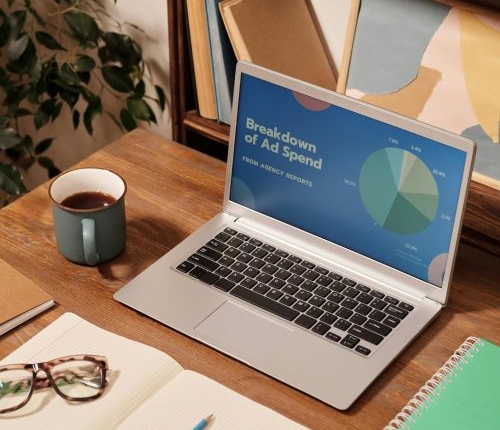how much do advertising companies charge
Understanding Agency Advertising Costs: A Comprehensive Guide
In today’s competitive market, effective advertising is crucial to boost your brand and reach your target audience. However, when working with advertising companies, it’s important to understand the costs involved in implementing your marketing strategy. In this section, we will provide an overview of advertising fees and what you can expect when partnering with agencies.
Advertising companies charge varying fees depending on several factors, including the scope of your campaign, the chosen mediums, and the expertise and reputation of the agency. By exploring the costs of advertising, you can make informed decisions and allocate your budget wisely to maximize your marketing efforts.
Key Takeaways:
- Advertising companies charge fees based on the scope and complexity of your campaign.
- The chosen advertising mediums, such as TV, radio, print, or digital, impact the overall costs.
- The expertise and reputation of the advertising agency can influence the fees they charge.
- Understanding advertising fees helps you allocate your budget effectively to achieve your marketing objectives.
- By comparing different agencies and their fees, you can make an informed decision that aligns with your brand’s needs and goals.
Factors Affecting Advertising Costs

When it comes to advertising, there are several factors that can influence the costs involved. Understanding these factors is crucial for effectively managing your advertising budget and ensuring your campaign reaches its target audience. In this section, we will explore the key determinants that advertising companies consider when calculating their charges.
The Significance of Your Advertising Budget
Your advertising budget plays a crucial role in determining the scope and scale of your campaign. A larger budget allows for more extensive advertising efforts, such as airing commercials during prime time slots or running a widespread digital campaign across multiple platforms. On the other hand, a smaller budget may limit your options, potentially resulting in a more localized or targeted approach.
The Characteristics of Your Target Audience
The characteristics of your target audience also impact advertising costs. Advertising companies consider factors such as demographics, behaviors, and interests to determine the best channels and strategies to reach your intended audience. The more specific and niche your target audience, the more customized and targeted the advertising campaign needs to be, potentially increasing costs.
The Complexity of Your Campaign
The complexity of your advertising campaign is another crucial factor in determining costs. A complex campaign may involve multiple platforms, extensive creative production, and specialized targeting methods. This level of complexity requires additional resources and expertise, which can contribute to higher costs. Conversely, a simpler campaign with fewer components and a straightforward strategy may come at a lower price point.
Keep in mind that advertising costs are not solely determined by these factors, but they serve as important considerations for advertising agencies when establishing their charges.
By understanding the interplay between your advertising budget, target audience, and campaign complexity, you can effectively plan and allocate your resources. In the next section, we will examine the various pricing models employed by advertising agencies, providing a deeper understanding of how costs are structured.
Pricing Models Used by Advertising Agencies

When working with advertising agencies, it’s important to understand the pricing models they employ. Different agencies may use varying approaches to determine their charges, and being familiar with these pricing models can help you make informed decisions about your advertising budget. In this section, we will explore three commonly used pricing models: commission-based, project-based, and retainer-based.
Commission-based Pricing Model
Commission-based pricing is a popular model where agencies charge a percentage of the total media spend or advertising revenue generated. This model is often used in performance-based campaigns, as it aligns the agency’s compensation with the success of the advertising efforts. One of the advantages of this model is that it provides an incentive for agencies to optimize campaigns and achieve better results. However, it’s important to carefully consider the commission rate and how it may impact your overall costs.
Project-based Pricing Model
The project-based pricing model involves setting a fixed fee for a specific advertising project or campaign. This model is often used for short-term initiatives or one-time projects. The advantage of project-based pricing is that it provides clear cost expectations upfront, allowing for better budgeting and planning. However, keep in mind that any changes or additional work outside the agreed scope may incur extra charges. It’s important to have a well-defined scope of work and clear communication with the agency to avoid unexpected costs.
Retainer-based Pricing Model
With a retainer-based pricing model, you pay a fixed recurring fee to retain the services of the advertising agency over a specified period, usually monthly or quarterly. This model is ideal for businesses that require ongoing advertising support, as it provides a predictable monthly cost. Retainer-based pricing often includes a set number of hours or services each month and allows for greater flexibility and collaboration with the agency. However, it’s important to carefully review the retainer agreement to ensure that it aligns with your specific needs and objectives.
Each pricing model has its own advantages and considerations, and the right choice depends on your unique requirements, budget, and goals. By understanding these pricing models and their pros and cons, you can better navigate the conversation with advertising agencies and find a pricing structure that works best for your business.
Average Advertising Costs by Medium
When it comes to advertising, understanding the average costs associated with different mediums is crucial in planning your marketing budget. Advertising fees vary depending on the medium you choose to promote your brand or product. In this section, we will provide insights into the typical charges for TV advertising, radio advertising, print advertising, and digital advertising.
TV Advertising Fees
TV advertising is a powerful medium for reaching a wide audience, especially during popular programs and events. On average, TV advertising fees can range from tens of thousands to millions of dollars, depending on factors such as the time slot, program popularity, and reach of the network or channel.
“TV advertising offers the advantage of visual and audio storytelling, capturing viewers’ attention and enabling effective brand messaging.”
– Jane Johnson, Marketing Director at XYZ Advertising Agency
Radio Advertising Fees
Radio advertising allows you to connect with listeners in their homes, cars, and workplaces. The cost of radio advertising varies based on factors such as the time of day, audience reach, and popularity of the station. Typically, radio advertising fees can range from hundreds to thousands of dollars for a single spot.
“Radio ads are a cost-effective way to target specific local audiences and build brand recognition through memorable jingles and impactful storytelling.”
– Michael Smith, Radio Advertising Specialist at ABC Media Group
Print Advertising Fees
Print advertising includes newspapers, magazines, and other physical publications. The costs for print advertising depend on factors such as the size of the ad, circulation, and the publication’s reach. On average, print advertising fees can range from a few hundred to several thousand dollars per publication.
“Print ads offer a tangible and credible medium for businesses to showcase their products or services, leveraging the trust and loyalty of readers.”
– Sarah Thompson, Print Advertising Consultant at XYZ Print Solutions
Digital Advertising Fees
Digital advertising encompasses various online platforms such as websites, social media, and search engines. The cost of digital advertising can be flexible, with options for pay-per-click (PPC) campaigns, display ads, or sponsored content. On average, businesses can expect to spend thousands to hundreds of thousands of dollars on digital advertising annually.
“Digital advertising provides precise targeting capabilities and valuable data insights, enabling businesses to reach their ideal audience with personalized content.”
– John Wilson, Digital Advertising Manager at ABC Digital Agency
Understanding the average advertising costs for each medium is essential in planning your marketing strategy. By considering the unique advantages and costs associated with TV advertising, radio advertising, print advertising, and digital advertising, you can make informed decisions that align with your budget and objectives.
Additional Expenses in Advertising Campaigns
Running an advertising campaign involves more than just the core advertising fees. There are additional expenses that you need to consider to ensure the success of your marketing efforts. In this section, we will delve into these extra costs and provide you with insights on how to manage them effectively.
Creative Production Costs
One of the significant additional expenses in an advertising campaign is creative production costs. These costs encompass the creation of advertisements and other promotional materials that capture and convey your brand’s message to your target audience. From developing visually appealing graphics to crafting compelling copy, the creative production process requires careful attention to detail and professional expertise.
Partnering with a creative team or agency is crucial for ensuring high-quality advertisements that resonate with your audience. While creative production costs can vary based on the complexity and scope of your campaign, investing in professional design and copywriting services can greatly enhance the effectiveness of your advertising efforts.
“Effective advertisements require a combination of captivating visuals and persuasive messaging. A well-executed creative strategy can help your brand stand out and make a lasting impact on your target audience.”
Media Buying Expenses

Another essential aspect of advertising campaigns is media buying expenses. These expenses involve the purchase of ad space or time on various platforms to reach your target audience effectively. The cost of media buying depends on several factors, such as the popularity of the platform, the duration of your ad, and the time slots you choose.
To optimize your media buying expenses, it’s essential to conduct thorough research and identify platforms that align with your target audience’s preferences and media consumption habits. By strategically selecting the right channels and negotiating favorable rates, you can maximize the impact of your advertising budget.
Managing Additional Expenses
Considering the additional expenses in advertising campaigns is crucial for budgeting and planning your marketing activities effectively. To manage these costs, follow these key strategies:
- Set a realistic budget: Determine an advertising budget that accounts for both the core fees and additional expenses. This will help you allocate your resources effectively and ensure you can cover all necessary aspects of your campaign.
- Prioritize your objectives: Clearly define your campaign objectives and prioritize them to allocate resources efficiently. By focusing on your goals, you can make informed decisions about where to invest your advertising budget.
- Obtain multiple quotes: Before engaging creative agencies or media platforms, obtain multiple quotes for comparison. This allows you to evaluate the costs and services offered by different providers, helping you make an informed decision that delivers value for money.
- Negotiate and bundle: When possible, negotiate pricing with creative agencies and media platforms. Bundle services or commit to long-term partnerships to secure volume discounts and lower overall advertising costs.
By actively managing and accounting for these additional expenses in your advertising campaigns, you will be better positioned to optimize your marketing efforts and achieve the desired results. Remember, investing in high-quality creative production and strategic media buying is essential for boosting your brand’s visibility and driving meaningful customer engagement.
Negotiating Advertising Rates
When it comes to advertising rates, there is often room for negotiation with agencies. By employing effective strategies and being well-informed, you can maximize your savings and get the most value out of your advertising budget.
1. Bundle Your Advertising Packages
One strategy to consider is bundling your advertising packages. By combining multiple ad placements or running ads across different mediums, you can potentially secure a discounted rate. Bundled advertising packages not only save you money but also allow for wider exposure and reach.
2. Leverage Volume Discounts
If you are planning a large-scale advertising campaign, take advantage of volume discounts. Advertising agencies often offer discounts based on the size and duration of your campaign. By committing to a significant ad spend, you can negotiate lower rates and stretch your budget further.
3. Know Your Value
Before entering into negotiations, have a clear understanding of the value you bring to the agency. Highlight your audience reach, engagement rates, and previous successful campaigns. By demonstrating your potential as an advertising partner, you can negotiate more favorable rates.
Remember, advertising agencies want to work with clients who can benefit their portfolio and deliver results. Use this leverage to your advantage during rate negotiations.
4. Request Added Value
Don’t be afraid to ask for added value as part of your negotiations. Agencies may be willing to offer additional services, such as creative design or campaign optimization, at no extra cost. This can further enhance your campaign’s effectiveness without increasing your budget.
5. Stay Open to Collaboration
View the negotiation process as an opportunity for collaboration rather than a strict transaction. Be open to discussions and alternative proposals from the agency. By working together, you can find mutually beneficial solutions that meet your goals and budget constraints.
By implementing these strategies and being prepared for negotiations, you can secure more favorable advertising rates and get the most out of your advertising investment. Remember, effective negotiation skills combined with a clear understanding of your campaign’s value are key to achieving successful outcomes.
Hidden Costs and Contracts to Watch For
When it comes to advertising contracts, it’s crucial to be aware of potential hidden costs and contractual terms that can impact your budget. Here’s what you need to watch out for:
1. Hidden Advertising Costs
While agencies may provide you with a cost estimate, it’s important to ask about any additional fees that may not be explicitly mentioned. These hidden advertising costs can include charges for revisions, rush orders, or additional deliverables that are not part of the initial agreement.
2. Contract Terms
Read the fine print of your advertising contract carefully. Pay close attention to the terms and conditions, including the scope of work, duration of the agreement, and any restrictions or exclusions. Understanding the contract terms will help you avoid unexpected surprises and ensure that both parties are aligned on deliverables and timelines.
3. Cancellation Fees
Find out if there are any cancellation fees or penalties outlined in the contract. In the event that you need to terminate the agreement prematurely, these cancellation fees can add significant costs and impact your overall advertising budget. Clarify the cancellation policy with the agency upfront to avoid any misunderstandings.
4. Additional Charges
In addition to hidden costs and cancellation fees, be aware of any other potential charges that may arise during the course of the campaign. This can include fees for revisions, additional research or analytics, and unexpected expenses related to production or media buying. Discussing these potential charges with the agency upfront will help you plan your budget effectively.
Remember, it’s essential to have open and transparent communication with the agency regarding costs and contracts. Ask questions, seek clarifications, and ensure that you fully understand the financial aspects of the agreement before signing on the dotted line.
By being vigilant and proactive in reviewing your advertising contracts, you can avoid hidden costs, understand the terms and conditions, and ensure that your advertising campaign stays within your budget.
Examples of Advertising Costs
Have you ever wondered how much it actually costs to run different types of advertising campaigns? In this section, we will provide you with real-life examples of advertising costs through case studies. By examining these examples, you will gain valuable insights into the range of expenses you might encounter when planning your own advertising initiatives.
“We launched a digital advertising campaign for our e-commerce business targeting young professionals interested in sustainable fashion. The campaign included banner ads on popular fashion websites and social media platforms like Instagram and Facebook. Over a three-month period, we spent a total of $15,000 on the campaign, with an average monthly cost of $5,000. This investment led to a significant increase in website traffic and a boost in sales revenue by 25%.” – Jane Smith, Founder of Sustainable Style Co.
As illustrated in the case study above, digital advertising campaigns can vary in cost depending on the duration, platforms used, and target audience. Jane’s campaign specifically focused on sustainability and fashion, reaching young professionals through popular websites and social media.
Different Campaign Types and Associated Costs:
- TV Advertising:
- 30-second commercial during prime time: $100,000
- Sponsorship of a popular TV show: $500,000
- Radio Advertising:
- 30-second spot during rush hour: $2,500
- Radio ad production costs: $1,000
- Print Advertising:
- Full-page color ad in a national magazine: $50,000
- Half-page black and white ad in a local newspaper: $1,500
- Digital Advertising:
- Sponsored social media post: $500
- Google AdWords campaign: $1,000 per month
As you can see from the examples above, the costs of different campaign types can vary significantly. TV and print advertising often require larger budgets, while radio and digital advertising can be more cost-effective options.
By understanding these real-life examples of advertising costs, you can better plan your own campaigns and allocate your budget effectively. Remember, each campaign is unique, so it’s essential to consider your specific goals, target audience, and desired reach when determining your advertising costs.
Conclusion
In conclusion, understanding the costs involved when working with advertising companies is crucial for making informed decisions about your marketing strategy. By considering the factors that affect advertising costs, such as your budget, target audience, and campaign complexity, you can better navigate the advertising landscape.
In addition, exploring the various pricing models used by advertising agencies, including commission-based, project-based, and retainer-based models, allows you to choose the option that best suits your needs and budget. It is also important to be aware of potential hidden expenses, such as creative production costs and media buying expenses, which may impact your overall advertising budget.
By taking these factors into account, you can select the right agency that aligns with your objectives and ensures optimal value for your advertising investment. Remember to negotiate advertising rates, consider bundled advertising packages, and watch out for any hidden costs or unfavorable contract terms that may arise. With this knowledge, you can confidently embark on your advertising journey and maximize the impact of your marketing efforts.
FAQ
What are advertising fees?
Advertising fees refer to the costs charged by advertising agencies for their services. These fees cover various aspects of the advertising process, including strategy development, creative production, media buying, and campaign management.
How do advertising companies determine their charges?
Advertising companies consider several factors when determining their charges. These factors include the scope and complexity of the campaign, the target audience demographics, the desired advertising mediums, and the resources required to execute the campaign effectively.
What are the different pricing models used by advertising agencies?
Advertising agencies typically use commission-based, project-based, or retainer-based pricing models. Commission-based pricing involves charging a percentage of the total media spend, project-based pricing is a flat fee for a specific project or campaign, and retainer-based pricing involves a monthly fee for ongoing services.
How much do different advertising mediums typically cost?
The average costs of advertising vary depending on the chosen medium. TV advertising fees can range from thousands to millions of dollars for prime-time slots, radio advertising fees can be anywhere from a few hundred dollars to several thousand dollars per spot, print advertising fees can vary depending on publication circulation and ad size, and digital advertising fees can vary based on ad formats, targeting options, and platforms.
Are there any additional expenses to consider in advertising campaigns?
Yes, there can be additional expenses in advertising campaigns. Creative production costs include the creation of advertisements and other promotional materials, such as graphic design, copywriting, and video production. Media buying expenses refer to the cost of purchasing ad space or time on various platforms.
How can I negotiate advertising rates?
To negotiate advertising rates, you can explore bundled advertising packages that offer cost savings. Additionally, you can discuss the possibility of volume discounts based on the scale and duration of your campaign. It’s essential to have a clear understanding of your advertising goals and budget before entering into negotiations.
What hidden costs and contract terms should I be aware of?
When signing advertising contracts, be mindful of hidden costs such as production overages, additional revisions, or unexpected expenses related to ad placements. Read the contract terms thoroughly and pay attention to cancellation fees, minimum spend requirements, and any other potential charges that may not be apparent upfront.
Can you provide examples of advertising costs?
Yes, we can provide examples of advertising costs through case studies. By showcasing different campaign types with corresponding expenses, you can gain a better understanding of the range of costs involved in advertising.
Why is understanding advertising costs important?
Understanding advertising costs is crucial for making informed decisions about your marketing strategy. By considering the factors that affect advertising costs, exploring different pricing models, and being aware of potential hidden expenses, you can align your budget and objectives with the right advertising agency and maximize the effectiveness of your campaigns.



